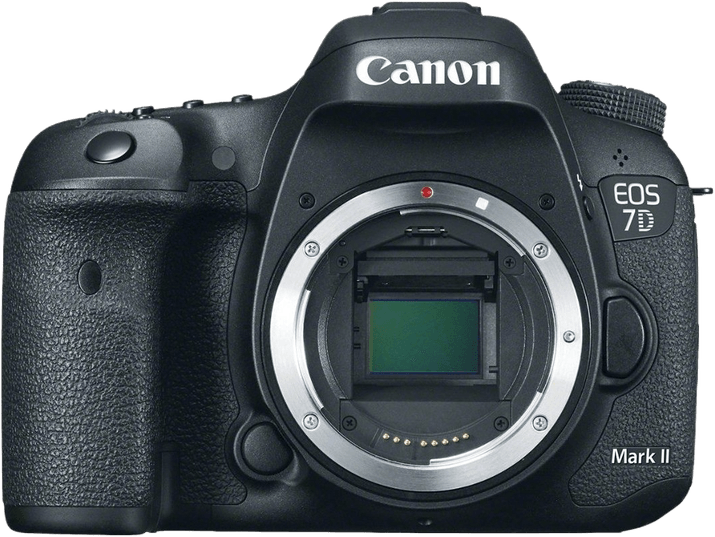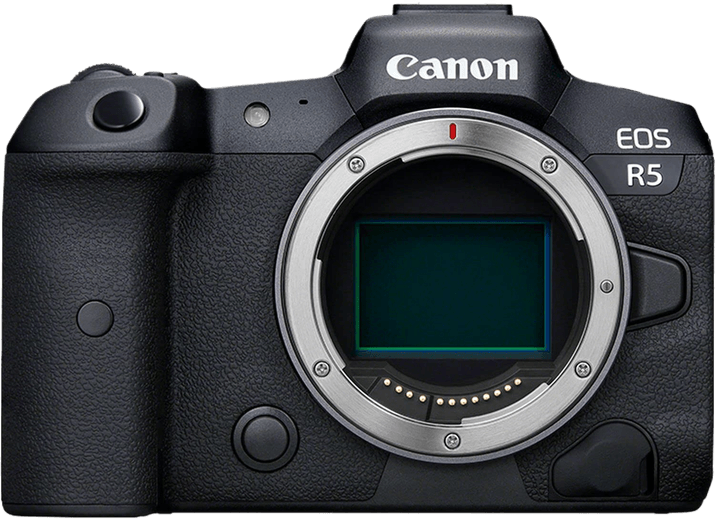Canon EOS 7D Mark II vs EOS R5 Comparison
Canon EOS 7D Mark II

Canon EOS R5

The Canon EOS R5 outperforms the Canon EOS 7D Mark II with a score of 86/100 compared to 60/100. Both cameras share some common specifications, such as being from the same manufacturer and having similar dimensions. The EOS R5, a mirrorless camera, is better in terms of weight, being lighter at 680g compared to the 7D Mark II’s 910g. Additionally, the EOS R5 is a more recent model, released in 2020, while the 7D Mark II is a DSLR from 2014.
However, the 7D Mark II has the advantage of a lower launch price of $1800 compared to the EOS R5’s $4499. Despite this, the EOS R5’s higher score demonstrates its superior quality and features. When considering these factors, the Canon EOS R5 proves to be the better camera choice for those who prioritize performance and modern technology, while the Canon EOS 7D Mark II may be more suitable for those on a budget or seeking a DSLR option.
Canon EOS 7D Mark II vs EOS R5 Overview and Optics
The Canon EOS R5 outperforms the Canon EOS 7D Mark II in optics, with a score of 88/100 compared to the 7D Mark II’s 61/100. Both cameras share some common specifications, including a CMOS sensor and a Canon lens mount. However, the EOS R5 excels in several areas, making it the superior choice in terms of optics.
The EOS R5 has a higher megapixel count at 45, compared to the 7D Mark II’s 20.2, resulting in more detailed and higher resolution images. The R5 also boasts a faster shooting speed of 20 frames per second, doubling the 7D Mark II’s 10 frames per second. The sensor size of the R5 is full frame, while the 7D Mark II has an APS-C sensor, contributing to the R5’s improved low-light performance and image quality. The R5’s processor, the Digic X, is more advanced than the dual Digic 6 processors in the 7D Mark II. Furthermore, the R5’s DXOMARK sensor score of 95 surpasses the 7D Mark II’s score of 70.
The 7D Mark II, however, does have an advantage in its lens mount compatibility. It uses the Canon EF-S mount, which allows for the use of both EF and EF-S lenses, offering a wider variety of lens options. The R5 uses the Canon RF mount, which is compatible with RF lenses only. Nevertheless, the R5 compensates for this limitation with its in-body image stabilization feature, which the 7D Mark II lacks.
Considering these factors, the Canon EOS R5 is the clear winner in optics, providing superior image quality, speed, and stabilization. While the 7D Mark II offers broader lens compatibility, it falls short in other areas, making the R5 the better choice for photographers prioritizing optical performance.
Canon EOS 7D Mark II vs EOS R5 Video Performance
The Canon EOS R5 emerges as the winner in video capabilities with a score of 100/100, while the Canon EOS 7D Mark II trails behind with a score of 56/100. Both cameras share certain specifications, but the EOS R5 outperforms the 7D Mark II in several aspects.
Common features between the two cameras include the ability to record video and adjust video frame rates. However, the EOS R5 excels in its video capabilities, boasting a maximum video resolution of 8K and dimensions of 8192 x 4320, significantly surpassing the 7D Mark II’s Full HD resolution and dimensions of 1920 x 1080. Additionally, the EOS R5 offers a maximum video frame rate of 120fps, doubling the 7D Mark II’s 60fps. The R5 also includes built-in time-lapse functionality, a feature absent in the 7D Mark II.
The 7D Mark II does not outperform the EOS R5 in any aspect of video capabilities. Its lower video score, resolution, dimensions, and frame rate all contribute to the R5’s superiority in this category.
Considering the video specifications, the Canon EOS R5 is the clear choice for those prioritizing video performance. Its 8K resolution, larger dimensions, higher frame rate, and built-in time-lapse functionality make it a more capable and versatile camera for videography. The Canon EOS 7D Mark II, while still a competent camera, falls short in comparison to the EOS R5’s advanced video features.
Canon EOS 7D Mark II vs EOS R5 Features and Benefits
The Canon EOS R5 outperforms the Canon EOS 7D Mark II in features, with a score of 87/100 compared to the 7D Mark II’s 57/100. Both cameras share some specifications, such as a screen size of 3 inches for the 7D Mark II and 3.2 inches for the R5, and both have WIFI capabilities.
The R5 has several advantages over the 7D Mark II. It has a higher screen resolution of 2,100,000 dots, compared to the 7D Mark II’s 1,040,000 dots. This results in a sharper and clearer display. Additionally, the R5 has a touchscreen, which the 7D Mark II lacks, making it more user-friendly. The R5 also has a flip screen, allowing for more versatile shooting angles. Furthermore, the R5 has Bluetooth connectivity, enabling easier transfer of files and remote control options.
The 7D Mark II has one advantage over the R5: it has GPS functionality, which the R5 does not. This feature allows for geotagging of images, which can be useful for organizing and locating photos based on location. However, this single advantage does not outweigh the multiple benefits provided by the R5.
Taking all of these factors into account, the Canon EOS R5 proves to be the superior camera in terms of features. With a higher resolution screen, touchscreen capabilities, a flip screen, and Bluetooth connectivity, the R5 offers more advanced and user-friendly options. While the 7D Mark II has GPS, this alone does not make up for the other features it lacks in comparison to the R5. Therefore, the Canon EOS R5 is the better choice for photographers seeking a camera with more advanced features.
Canon EOS 7D Mark II vs EOS R5 Storage and Battery
The Canon EOS R5 wins the storage and battery comparison with a score of 68/100, slightly ahead of the Canon EOS 7D Mark II’s 65/100. Both cameras feature two memory card slots and accept SD/SDHC/SDXC cards. The EOS R5 has an advantage with its UHS-II compatibility and support for CFexpress cards, offering faster data transfer speeds for professional use.
However, the EOS 7D Mark II has a longer battery life, providing 670 shots compared to the EOS R5’s 320 shots. This difference makes the EOS 7D Mark II more suitable for extended shooting sessions. Both cameras use similar battery types, with the EOS R5 using the LP-E6NH and the 7D Mark II using the LP-E6N.
The EOS R5’s USB charging capability is a noteworthy advantage, allowing users to charge the camera conveniently on the go. Despite its shorter battery life and lower score, the EOS R5 excels in storage capabilities and convenient charging options, making it the winner in this comparison.
Canon EOS 7D Mark II vs EOS R5 – Our Verdict
Are you still undecided about which camera is right for you? Have a look at these popular comparisons that feature the Canon EOS 7D Mark II or the Canon EOS R5:

